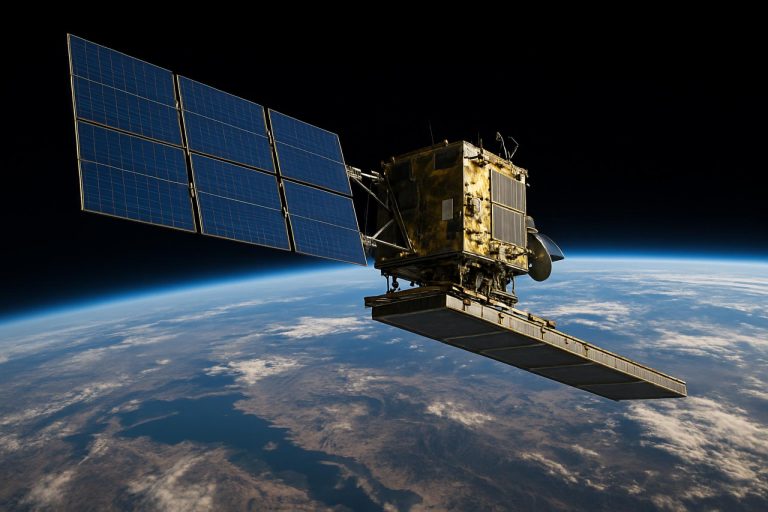
The $150 Billion Digital Energy Revolution: How Eastern Europe and Central Asia Could Cut Emissions by 70% This Decade
South-Eastern & Eastern Europe, the Caucasus, and Central Asia can slash emissions and costs by digitizing their power grids by 2030.
• Estimated regional investment needed: $150 billion by 2030
• Potential emission reduction: up to 70%
• Potential energy cost drop: as much as 80%
• 60% of current mix: natural gas & coal
Eastern and South-Eastern Europe, the Caucasus, and Central Asia are staring down the opportunity of a generation. As legacy energy grids groan under the weight of age and fossil fuel dependency, a new UNECE report reveals a roadmap to a digital and renewable-powered future that promises breathtaking gains: up to 70% fewer carbon emissions and energy prices dropping by as much as 80%. The catch? These historic gains require a major overhaul—one that will cost an estimated $150 billion by 2030, but come with even greater rewards.
The digital age has already transformed everything from banking to retail. Now, it’s knocking on the doors of energy systems across Albania, Belarus, Georgia, Kyrgyzstan, North Macedonia, Republic of Moldova, and Ukraine. In these countries, 60% of energy still comes from natural gas and coal, setting the stage for massive disruption.
Q&A: Why Go Digital in Energy?
What tech is leading the charge?
Innovations like Artificial Intelligence (AI), the Internet of Things (IoT), Digital Twins, and Virtual Power Plants are revolutionizing how electricity is produced, transmitted, and consumed. These tools enable more efficient integration of renewables, rapid response to grid disturbances, and predictive maintenance, helping to keep the lights on and bills down.
What’s wrong with current infrastructure?
Much of the energy grid dates back to the Soviet era. In Belarus, more than 60% of thermal plants are over 30 years old—leading to high maintenance costs and frequent outages. Georgia’s transmission lines average over 30 years old, with 12% of electricity lost just in transit.
How vulnerable are these countries to energy shocks?
Many rely heavily on imported fossil fuels. Moldova imports roughly 70% of its electricity, while Belarus relies on Russian natural gas for about half its needs. Outdated systems and foreign dependency expose them to price volatility and supply disruption.
How Can Digitalization Create a Clean Energy Breakthrough?
1. Smarter, Resilient Grids
By embracing smart grids and digital monitoring, countries can maximize renewables and reduce costly transmission losses. Technologies like Digital Twins create virtual simulations of the grid, allowing for real-time problem solving and long-term planning.
2. Renewable Integration and Hybrid Models
Mixing renewables with next-gen hybrids—combining gas and hydrogen—can provide steady power while slashing emissions. Smart software helps balance these diverse sources, even as the sun sets or the wind dies.
3. Scalability and Energy Efficiency
Retrofitting old infrastructure with digital controls, sensors, and efficiency upgrades could save billions. In Kyrgyzstan, for example, modernizing hydropower with AI could double output using the same water flows.
4. Cybersecurity and Reliability
Digital transformation improves cyber defenses, protecting against attacks that could cripple outdated grids.
What Are the Biggest Hurdles?
1. Financing Gaps
While the $150 billion investment might sound monumental, many nations can’t even secure a fraction of the funds needed. Albania has struggled to find $300 million for solar and wind projects; Belarus has locked in only 5% of its planned renewables funding.
2. Talent Shortages
Workforce readiness is another blocker—up to 30% of energy professionals in Georgia lack proper renewables training, for example.
3. Health and Environmental Impacts
Belarus emits nearly 8 million tonnes of CO2 from its energy sector each year. In North Macedonia, coal-driven air pollution ranks among the worst in Europe.
How Can These Barriers Be Overcome?
- Cross-Border Infrastructure: Initiatives like the Trans-Caspian High-Voltage Direct Current line are crucial for sharing excess clean energy and enhancing digital connectivity.
- Scaled Energy Efficiency: Investments in digital retrofitting and renovation will multiply grid efficiency and savings.
- Human-Centered Digitalization: UNECE reports emphasize ethical progress—prioritizing people, fair transitions, and sustainability above mere tech upgrades.
- Policy and International Support: Governments must implement robust standards, incentivize research, and massively expand professional training pipelines.
Explore more about global energy trends at International Energy Agency or learn about sustainable energy on UNECE.
What Happened at the 2025 Belarus Smart Energy Workshop?
On May 22, 2025, over 100 leaders—including government officials, energy executives, and international experts—gathered in Minsk and online. This landmark hybrid event, hosted by UNDP Belarus, the UNECE, and the State Committee for Standardization, mapped out next steps for smart grids and advanced climate action in Belarus and beyond.
The message was clear: The digital revolution can supercharge energy efficiency, enable clean mobility, and drive significant progress toward climate targets—if the right investments and policies fall into place.
Ready to Spark Change? Here’s How to Accelerate the Clean Energy Revolution
- Push for government and private investment in digital grid modernization.
- Champion international collaborations for cross-border energy projects.
- Support retraining and upskilling of the local energy workforce.
- Advocate for ethical, people-first tech policies in energy reform.
- Stay informed via trusted sources like UNECE and the IEA.
The future is digital, clean, and resilient—if action starts today. Join the movement and be part of Europe’s energy transformation!



